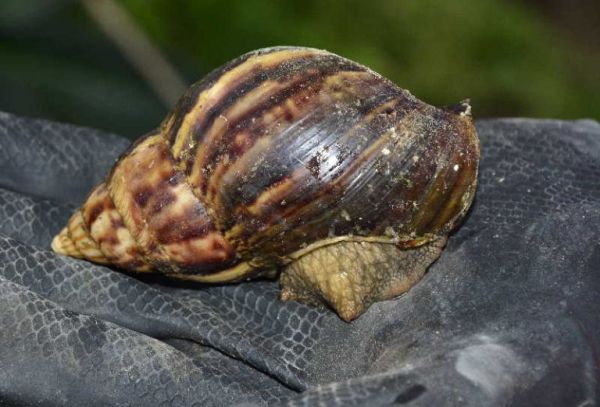
The National Institute of Plant Health analyzed the samples collected and confirmed the presence of the dangerous mollusk in Sancti Spíritus, central Cuba
An alert recently issued in Cabaiguán, a municipality located in Sancti Spiritus, central Cuba, is keeping local residents in suspense after the identification there of the Giant African Land Snail. Since then, health authorities have increased preventive and environmental sanitation actions so that the dangerous mollusk won’t spread.
Armando Ulloa Martínez, deputy director of Hygiene and Epidemiology in Cabaiguán, said that since the finding of the snail an environmental sanitation work was started with the participation of local authorities, neighbors and the workers of the centers near the affected area.
According to Maikel Farías González, from the Provincial Unit of Plant Health, the result of the sample sent to the National Institute for analysis has been already received, showing that it is the Giant African Land Snail, known scientifically as Lissachatina coot Bowdich.
This mollusc was first heard of in Cuba in 2014. It is a very dangerous carrier of parasites that can cause diseases such as meningoencephalitis and abdominal angiostrongiliasis. It is also considered one of the 100 most harmful invasive species in the world.
The Provincial Office of the Surveillance and Vector Control Center in Sancti Spíritus tells the population that in case of finding new colonies of the snail, they should not touch them without protection and they should immediately notify the health area or the vector department at the polyclinic.
 Escambray ENGLISH EDITION
Escambray ENGLISH EDITION





Escambray reserves the right to publish comments.